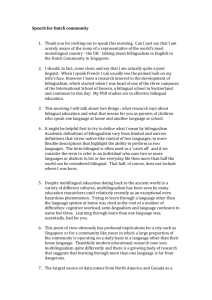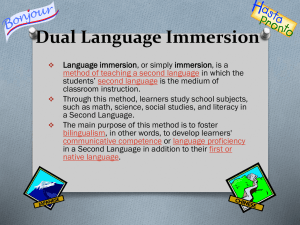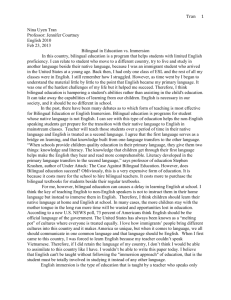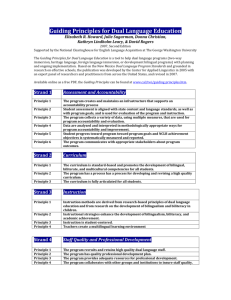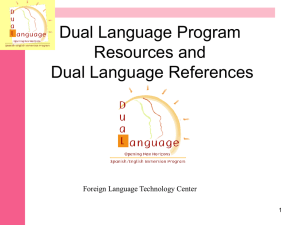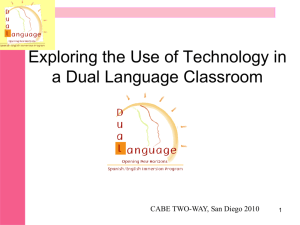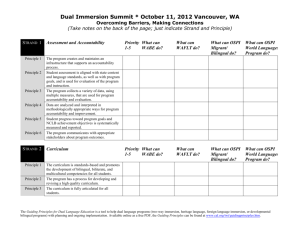File - Yanelli Lopez
advertisement
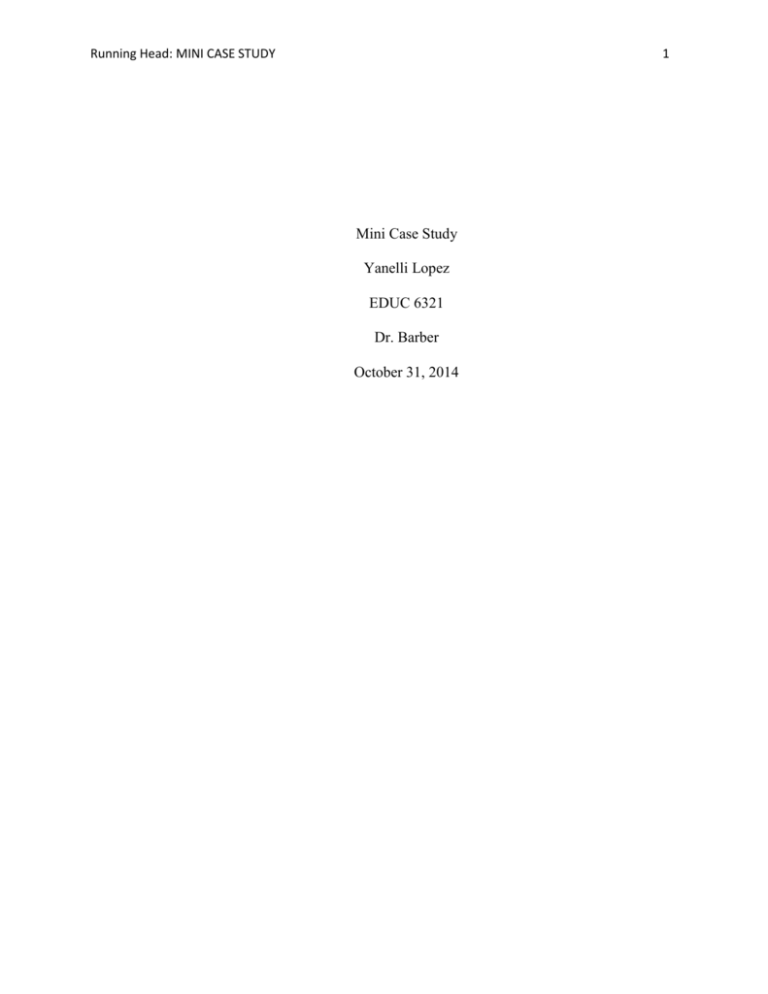
Running Head: MINI CASE STUDY 1 Mini Case Study Yanelli Lopez EDUC 6321 Dr. Barber October 31, 2014 Running Head: MINI CASE STUDY 2 Over the past decade, there has been a constant push by states to instill in public school English Immersion programs. The initiative to implement English Immersion programs has had a negative effect on bilingual programs across states. Consequently, the number of transitionalbilingual-educational programs have “shrunk in the aftermath of heated, politically charged ballot initiatives.” (Maxwell, 2012) As a result, transitional bilingual-educational programs are closely observed and compared with the “relatively” new educational trend sweeping across America, dual language immersion programs. Dual language immersion programs claims to yield better academic results in English language learners (Ells) and non-English language learners. Moreover, research also illustrates that dual language immersion programs close achievement gaps among Ells and students labeled at risk. (Maxwell, 2012) Are dual language immersion programs better than transitional bilingual programs? If so, what are the key components in the dual language immersion program that enables it to yield higher results than the transitional bilingual program? My hypothesis is that neither program is better than the other because they both share a common objective; to fully develop strong language acquisition in both languages. The components that distinguishes a program from the other is on its delivery of instruction. For the case study, I decided to interview my group partner in order to examine the type of language program preferred at her school. I also decided to interview my principal to examine closely our language program. The question that I asked centered more on the program in school and the students’ academic achievement. In conclusion, my classmates stated that at her school, they have a dual language immersion program. She reported that the students in the lower grades score significantly higher than monolingual students. She also Running Head: MINI CASE STUDY 3 informed me that developmentally, students in dual langue immersion programs were more culturally aware and exposed to different things. When I interviewed my principal, we talked about the challenges and struggles students in the upper grades face on standardized testing. Our school implements a late transitional bilingual program. Students exit the program when they reach the 5th grade. The standardized testing scores demonstrated that students in 5th grade are struggling to adjust to the change. My principal and I examined the 2013-2014 scores for all grade levels across indexes. When looking closely at the percentages, there was a significantly higher percentage of bilingual students meeting testing standers on the reading and math readiness portion. 88 % of students in 3rd grade bilingual class met stander while 60% of students in monolingual classes met stander. The data was even more surprising whenever we examined the Ells group who had waivered / exited the bilingual program before 5th grade but had attended bilingual classes in lower grades. When this Ells group was examined, we discovered that the Ells had scored higher than monolingual students. So what does this mean? This may indicate that no program can guaranteed to close achievement gap. This data illustrates that the delivery of instruction is the key component that can close achievement gap. This finding also indicates that Ells might perform better than monolingual students because of a skill bilingual students have. I believe that the reason why bilingual students are performing better is because they are aware and know how to use their metacognition skills to their advantage. When students are transitioning through this bilingual class, instructors relay heavily on graphic organizers and tools that help student organize and become aware of their thinking and leaning style. Findings illustrate that students in dual Running Head: MINI CASE STUDY 4 language programs are exposed to strategies/ instruction that monolingual students are not exposed to. As a result, I believe the reason why students in dual langue programs score higher than monolingual students is because higher exposure to metacognition strategies. Running Head: MINI CASE STUDY 5 References Maxwell, Leslie A. "Dual Languge Programs Gain a Toehold in Schools." Educational Week 31 (2012)
